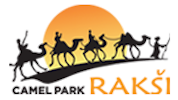ALPACA (Vicugna pacos)
Alpacas are even-toed ungulates of the camel family, originated in the Northern Andean mountains about 4000-5000 years BC. Their predecessor is vicuña.
Distribution: Bolivia, Peru, Ecuador, Chile, Argentina, USA, New Zealand, Australia, Europe.
The first alpacas in the „Rakši” were imported from South America in 2008.
Weight: 54-70 kg
Height: 90-130 cm
Life Span: 15-25 years
Gestation: 11 months
Environment: highlands, grassy areas
Status: domestic animal
IN THE WORLD
* Alpacas were domesticated by the Andean people because of their wool.
* Together with people 4000-6000 years.
* Ancestors – vicuñas.
* Live in the Andes Mountains in up to 5000 m highness.
* There are currently about 3.5 million alpacas in the world. 99% live in South America.
* Therapy animals – employed in hospitals, nursing homes, rehabilitation centres.
ALPACA
Ears: Shorter and rounder
Muzzle: Smaller nose, surrounded by curls
Weight: 50-80 kg
Wool: Fine, soft, silky
Character: Calm, loyal, gentle
Use: For wool production
LLAMA
Ears: Bigger and sharper
Muzzle: Longer, more angular, less hairy
Weight: 130-180 kg
Wool: Rougher, shaggy
Character: Independent, brave
Use: For carrying loads
FACTS ABOUT ALPACAS
* Live in harems.
* There are 2 different types of wool – Huacaya and Suri.
* Can interbreed with llamas.
* Males have particularly long fighting teeth in the lower jaw.
* Females reach sexual maturity 3 times earlier than males.
* The boundaries of the territory are marked with communal dung piles.
* To visit the toilet, the females line up in an organized queue.
* They can spit green – saliva along with gastric juice.
* Must be sheared at least once a year.
* The fur can reach a length of 50 cm.
* The obtained wool is the finest in the world. It can have 52 tones.
* Wool has earned the recommendations the Council of Fashion Designers of America.
* This wool is more resistant than mohair and warmer than goose down.
* They talk to each other with soft sounds that become louder in anger.

